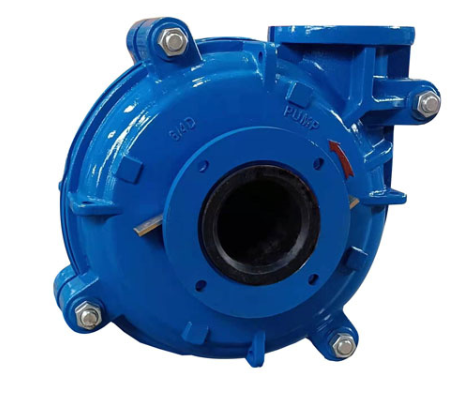- Shifo Industrial Zone, Anguo City, Hebei Province,China
- +8618831216699
sale@nlpumps.com


How does a slurry pump work
A slurry pump is a type of centrifugal pump that is specifically designed to handle abrasive and high-density slurries. It is commonly used in the mining, oil and gas, and industrial sectors for moving heavy slurries containing solids such as sand, gravel, and minerals. In this article, we will take a closer look at how a slurry pump works and its key components.
Impeller
The impeller is the main rotating component of a slurry pump. It consists of a series of curved vanes that are mounted on a central shaft. When the impeller rotates, it creates a centrifugal force that draws the slurry into the pump and then throws it out through the discharge port.
Casing
The casing is the outer shell of the pump and is designed to contain the slurry as it moves through the pump. The casing is typically made from metal and is lined with wear-resistant materials such as rubber or polyurethane to protect against abrasion and corrosion.
Suction and discharge ports
The suction port is located at the inlet of the pump and is where the slurry enters the pump. The discharge port is located at the outlet of the pump and is where the slurry is ejected out of the pump and into the pipeline.
Shaft seal
The shaft seal is a critical component of a slurry pump as it prevents the slurry from leaking out of the pump and damaging the surrounding equipment. There are several types of shaft seals, including packing seals, mechanical seals, and lip seals.
Bearings
Bearings are used to support the rotating shaft and provide stability to the impeller. The bearings are typically lubricated to reduce friction and prevent damage to the shaft and impeller.
Drive unit
The drive unit is responsible for providing the power to rotate the impeller. The most common types of drive units used in slurry pumps are electric motors and diesel engines.
Agitator
Some slurry pumps are equipped with an agitator, which is a device that is used to stir up and mix the slurry before it enters the pump. This is particularly useful when pumping thick or viscous slurries that are difficult to move.
In operation, the slurry enters the pump through the suction port and then moves through the impeller, which creates a centrifugal force that throws the slurry out through the discharge port. As the slurry moves through the pump, the wear-resistant materials in the casing and impeller protect the pump from abrasion and corrosion. The shaft seal prevents the slurry from leaking out of the pump and damaging the surrounding equipment, while the bearings support the rotating shaft and provide stability to the impeller. The drive unit provides the power to rotate the impeller, and the agitator stirs up and mixes the slurry before it enters the pump.
In conclusion, slurry pumps are a critical component in many industrial applications, particularly those that involve the transportation of abrasive and high-density slurries. By understanding how they work and their key components, it is possible to select and maintain the right pump for your application, ensuring optimal performance and efficiency.